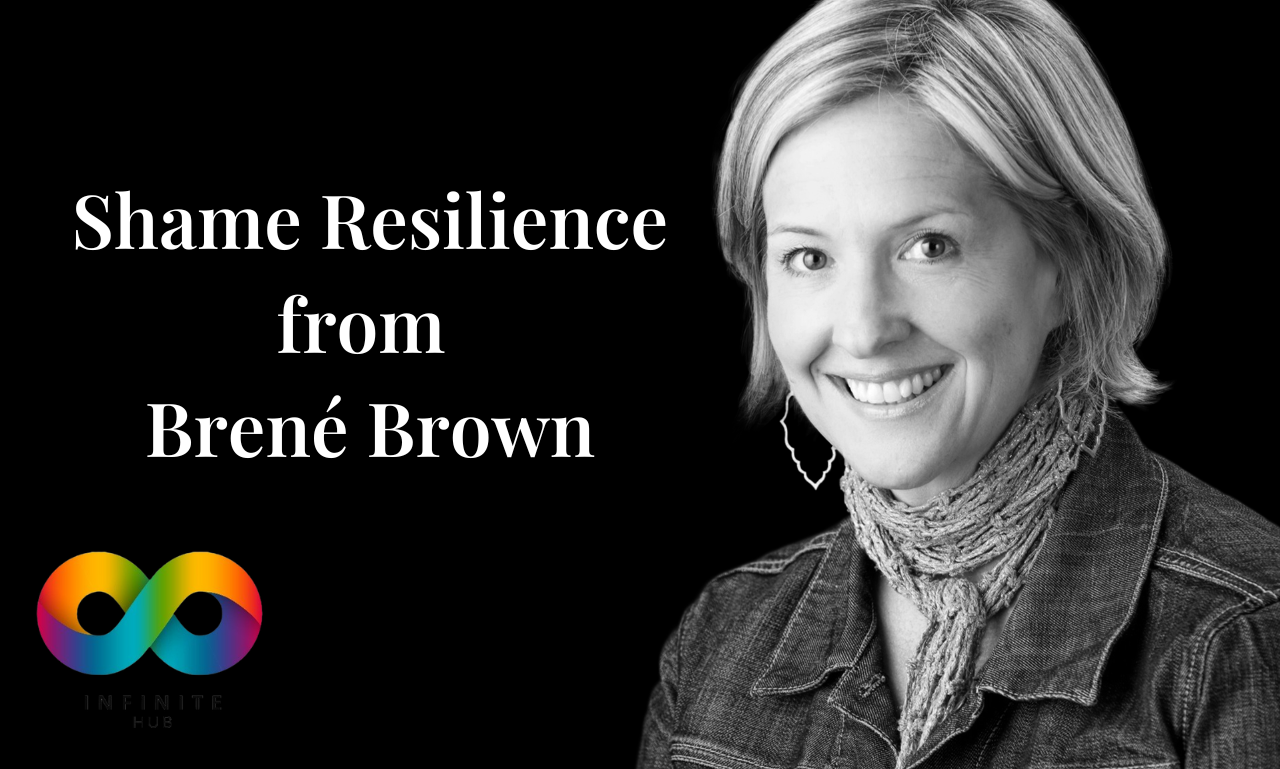Introduction
Shame resilience is a concept extensively explored by Dr. Brené Brown, a research professor and author who has dedicated her career to studying vulnerability, courage, worthiness, and shame. Understanding and developing shame resilience is essential for personal growth and fostering healthy relationships. This comprehensive guide delves into Brené Brown’s work on shame resilience, providing insights and practical tools to help you navigate and overcome the debilitating effects of shame.
Understanding Shame
Definition of Shame
Shame is a deeply painful emotion that stems from the belief that we are flawed and therefore unworthy of love and belonging. It is an intensely personal experience that can undermine our sense of self and inhibit our ability to connect with others.
The Psychology of Shame
Shame affects us on both emotional and psychological levels. It can lead to feelings of worthlessness, isolation, and anxiety. Psychologically, shame can distort our perceptions and influence our behaviors, often leading to a cycle of self-criticism and avoidance.
Brené Brown’s Research
Overview of Brené Brown’s Work
Brené Brown’s groundbreaking research has illuminated the complex nature of shame and its impact on our lives. Through extensive qualitative studies, she has identified key patterns and behaviors associated with shame and vulnerability.
Key Findings on Shame
Brown’s research highlights that shame is universal and that everyone experiences it to some degree. She emphasizes that the ability to be vulnerable and open about our shame is crucial for building resilience and fostering authentic connections.
The Concept of Shame Resilience
Definition of Shame Resilience
Shame resilience refers to the ability to recognize shame, move through it constructively, and emerge with a stronger sense of self-worth and connection. It involves understanding and mitigating the impact of shame on our lives.
Importance of Shame Resilience
Developing shame resilience is vital because it allows us to navigate life’s challenges without being crippled by feelings of inadequacy. It empowers us to embrace our imperfections and cultivate a sense of belonging and self-compassion.
Components of Shame Resilience
Recognizing Shame
The first step in building shame resilience is learning to recognize when we are experiencing shame. This involves being attuned to the physical and emotional signs of shame, such as feeling small, wanting to hide, or being overly critical of ourselves.
Critical Awareness
Critical awareness involves understanding the context and triggers of our shame. By identifying these elements, we can challenge the unrealistic expectations and societal pressures that contribute to our feelings of shame.
Reaching Out
Connecting with others is a powerful antidote to shame. Reaching out for support helps us realize that we are not alone in our struggles, and it provides a sense of solidarity and validation.
Speaking Shame
Talking about our experiences of shame can be incredibly liberating. It requires vulnerability and courage but can lead to profound healing and growth. Sharing our stories helps to dismantle the power that shame holds over us.
Practicing Self-Compassion
Definition and Importance
Self-compassion involves treating ourselves with the same kindness and understanding that we would offer to a friend. It is crucial for building shame resilience, as it helps us to counteract self-criticism and foster a more positive self-view.
Techniques for Self-Compassion
Practicing self-compassion can be done through mindfulness, self-kindness, and recognizing our common humanity. Techniques such as guided meditation, affirmations, and self-care routines are effective ways to cultivate self-compassion.
Developing Empathy
What is Empathy?
Empathy is the ability to understand and share the feelings of another person. It involves being present and emotionally attuned to others’ experiences, which can create deeper connections and mutual understanding.
Empathy vs. Sympathy
While empathy involves truly feeling with someone, sympathy is more about feeling for someone. Empathy fosters connection by validating others’ experiences, whereas sympathy can sometimes create a sense of separation.
How to Cultivate Empathy
Cultivating empathy requires active listening, open-mindedness, and practicing perspective-taking. It involves putting ourselves in others’ shoes and responding with genuine care and concern.
The Role of Vulnerability
Why Vulnerability is Crucial
Vulnerability is essential for building shame resilience because it allows us to be authentic and connect with others on a deeper level. It involves embracing our imperfections and being open about our struggles.
How to Embrace Vulnerability
Embracing vulnerability means letting go of the fear of judgment and being willing to share our true selves. It requires courage and the understanding that vulnerability is a strength, not a weakness.
Building Resilient Relationships
Characteristics of Resilient Relationships
Resilient relationships are built on trust, empathy, and open communication. They involve mutual support, understanding, and the ability to navigate conflicts constructively.
Tips for Strengthening Bonds
To strengthen bonds in relationships, practice active listening, show appreciation, and communicate openly and honestly. Building resilience in relationships also involves being patient and forgiving with each other.
Shame and Culture
Cultural Differences in Shame
Shame can manifest differently across cultures. Some cultures may emphasize honor and collective identity, while others may focus on individual achievement, influencing how shame is experienced and expressed.
Addressing Cultural Stigmas
Addressing cultural stigmas involves challenging stereotypes and promoting inclusivity. It requires creating spaces where diverse experiences and perspectives are valued and respected.
Shame in the Workplace
Identifying Shame in Professional Settings
Shame in the workplace can stem from unrealistic expectations, fear of failure, or negative feedback. Recognizing these signs can help in creating a healthier work environment.
Creating a Shame-Resilient Work Culture
Building a shame-resilient work culture involves promoting transparency, encouraging open communication, and supporting employees in their professional growth and well-being.
Shame and Gender
Gender Differences in Experiencing Shame
Men and women often experience shame differently due to societal expectations and gender roles. Understanding these differences is crucial for addressing gender-specific shame.
Addressing Gender-Specific Shame
Addressing gender-specific shame involves challenging stereotypes and promoting gender equality. It requires creating safe spaces where individuals can express their true selves without fear of judgment.
Shame and Parenting
How Shame Affects Parenting
Shame can significantly impact parenting, influencing how parents interact with their children and manage their own emotions. Recognizing and addressing shame is essential for healthy parenting.
Strategies for Shame-Resilient Parenting
Shame-resilient parenting involves fostering open communication, practicing empathy, and modeling vulnerability. It requires creating a supportive environment where children feel valued and understood.
Shame and Mental Health
The Impact of Shame on Mental Health
Shame can have profound effects on mental health, contributing to conditions such as depression, anxiety, and low self-esteem. Addressing shame is vital for improving mental well-being.
Coping Strategies
Coping with shame involves practicing self-compassion, seeking support, and engaging in activities that promote self-worth. Therapy and counseling can also be beneficial for managing shame-related issues.
The Role of Forgiveness
Definition and Importance of Forgiveness
Forgiveness involves letting go of resentment and embracing a mindset of compassion and understanding. It is essential for healing from shame and fostering emotional resilience.
Steps to Forgiveness
Forgiveness can be achieved through self-reflection, empathy, and the willingness to move past grievances. It involves recognizing the humanity in others and choosing to release negative emotions.
Overcoming Shame Triggers
Common Triggers
Common triggers for shame include criticism, rejection, and failure. Identifying these triggers is the first step in managing and overcoming them.
Techniques to Manage Triggers
Techniques for managing shame triggers include mindfulness, cognitive reframing, and seeking support from trusted individuals. Developing healthy coping mechanisms is key to resilience.
Building Self-Worth
The Connection Between Shame and Self-Worth
Shame often undermines our self-worth, leading to feelings of inadequacy and self-doubt. Building self-worth involves recognizing our inherent value and embracing our strengths and weaknesses.
Ways to Enhance Self-Worth
Enhancing self-worth can be done through positive self-talk, setting and achieving personal goals, and surrounding ourselves with supportive and affirming people.
The Power of Storytelling
Using Stories to Heal Shame
Sharing our stories can be a powerful way to heal from shame. It allows us to connect with others, gain new perspectives, and find validation in our experiences.
Examples from Brené Brown’s Research
Brené Brown’s research includes numerous examples of how storytelling has helped individuals overcome shame. These stories highlight the transformative power of vulnerability and connection.
Tools and Techniques for Shame Resilience
Practical Exercises
Practical exercises for building shame resilience include journaling, mindfulness practices, and role-playing scenarios. These tools help us to process our emotions and develop healthier responses.
Journaling and Reflection
Journaling and reflection are effective ways to explore and understand our experiences of shame. They provide a safe space for self-expression and insight.
Case Studies and Examples
Real-Life Applications
Real-life applications of shame resilience involve individuals sharing their journeys of overcoming shame and building resilience. These stories offer inspiration and practical insights.
Success Stories from Brené Brown’s Work
Brené Brown’s work includes numerous success stories from individuals who have applied her principles to their lives, achieving greater self-worth and connection.
The Long-Term Benefits of Shame Resilience
Personal Growth
Shame resilience leads to significant personal growth, fostering a stronger sense of self and the ability to navigate life’s challenges with confidence.
Enhanced Relationships
Building shame resilience enhances our relationships, allowing for deeper connections, greater empathy, and more authentic interactions.
Common Misconceptions
Myths about Shame and Resilience
Common misconceptions about shame and resilience include the belief that shame is a sign of weakness or that it can be entirely eradicated. Understanding the truth about shame is crucial for building resilience.
Debunking Misconceptions
Debunking these misconceptions involves educating ourselves about the nature of shame and resilience, and recognizing that everyone experiences shame at some point.
FAQs
What is Shame Resilience? Shame resilience is the ability to recognize, navigate, and recover from shame constructively, fostering a stronger sense of self-worth and connection.
How can I recognize shame? Recognizing shame involves being attuned to physical and emotional signs such as feelings of worthlessness, wanting to hide, or being overly self-critical.
What are some techniques for building empathy? Techniques for building empathy include active listening, practicing perspective-taking, and engaging in open and compassionate communication.
How does vulnerability relate to shame resilience? Vulnerability is crucial for shame resilience as it involves being open about our struggles and imperfections, which fosters connection and healing.
Can shame be completely eradicated? While shame cannot be completely eradicated, developing resilience allows us to navigate and mitigate its impact on our lives.
How can I teach my children about shame resilience? Teaching children about shame resilience involves fostering open communication, practicing empathy, and modeling vulnerability and self-compassion.
Conclusion
Shame resilience is a powerful tool for personal growth and fostering healthier relationships. Brené Brown’s research provides valuable insights and practical strategies for recognizing and overcoming shame. By embracing vulnerability, practicing self-compassion, and cultivating empathy, we can build resilience and lead more fulfilling lives.
============================================



